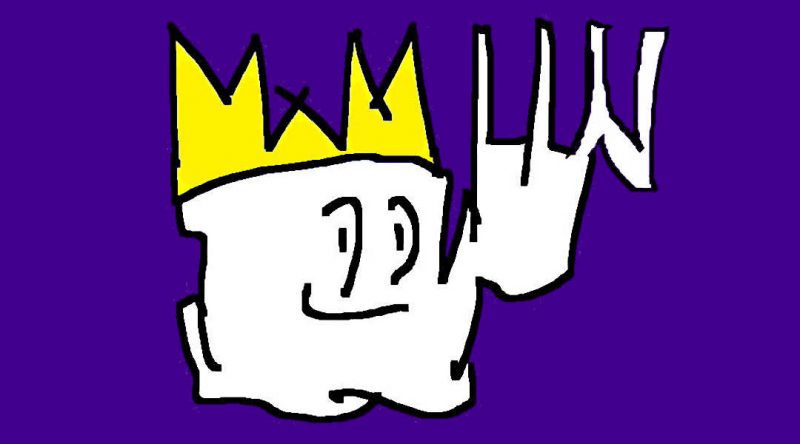Em Lyons Bouch’s “Moving the Chains” is a debut novel about Abigail Mandato, “Abby”, a shy, nervous teenage girl who only feels at home on the football field, as her school’s star quarterback. Due to her father’s alcoholism, the family finances have deteriorated to such an extent that the parents decide to move everyone across the state to work in a relative’s hardware store. Abby is completely unable to handle the prospect of moving and the traditional “family moving” story takes a very different turn. Don’t confuse this book with the non-fiction memoir of the same name, “Moving the Chains: Tom Brady and the Pursuit of Everything”. While both books do feature American football, Bouch accomplishes something seldom seen in fiction and this novel is setup to be an incredibly important story about overcoming mental health. Mental illness is difficult to address for an array of reasons, especially from a story architecture perspective. Though “Moving the Chains” at times struggles with its pacing, it is ultimately successful and a worthwhile read.
Disclosure: I am a semi-active member of Recovery International, the self-help group that features in the book under review. Before reading the book, I had never heard of or met the author.
Art reviews, artist statements, and intention
Having recently trudged through David Foster Wallace’s “Infinite Jest”, I am reminded of the importance an artist’s statement. Like a simple contemporary painting without any context, reading an unusual and directionless, 1,000 page book is frustrating and possibly pointless. In some ways, it is impossible to have an intelligent conversation about a work of art without understanding the artist’s intentions. However, imagine if Wallace included a foreword explaining what he was trying to do. The reader and critic would easily be able to estimate whether they thought the author, or artist, achieved what they set out to do: Did the author think the book was a success? Works of literature seldom include these types of introductions, so without this insight the books must be judged on each of its attributes individually: Story and plot, characters, setting, and prose.
Em Lyons Bouch includes an afterword, explaining a bit about her intentions with the book, its background, as well as answers to a lot of questions the reader might have. I cannot recall the last time I read an author’s statement and I was absolutely delighted with the experience. I am grateful to the author for the additional insight into her work and life, without having to scour the internet looking for answers that might not be there. In the afterword, Bouch describes her main, explicitly-stated goal:
“This book was a way to give a voice to a group of voiceless people. I have tried to portray what it is like to experience the symptoms of mental illness and live with the stigma associated with it.” -Bouch, Em Lyons. Moving the Chains (p. 438). UnSung Heroes Publishing. Kindle Edition.
In every respect, she has achieved this goal with excellence. She portrays “the unglamourous side of mental health conditions” and adeptly captures the stigma and fear around the topic.
Bouch likely weighed many more, unstated goals. She went to great lengths and did a remarkable job detailing the experience of mental health, in this case anxiety, both in the early stages as the individual begins to truly struggle with everyday life and take notice of their symptoms, as well as at the end of the journey, during smaller battles to control their symptoms. The author also clearly and consistently introduces a wide variety of mental health resources to readers. With that in mind, I highly recommend this book for anyone that doesn’t really understand mental illness or is curious what all the fuss is about. Only seasoned mental health professionals might not find a lot of value, but even someone with my lengthy experience with mental health found Bouch’s subtle, but systematic exposure to resources incredibly clever. Besides the high school counselor, the other main resource in the book is the self-help group Recovery International (RI). With over 10,000 active members, it is likely the world’s largest mental health organization. “Recovery” is still rather unknown by the general public and this is the first work of fiction that features the group. Thus, Bouch also had to properly integrate RI’ framework and “in-speak” language, not an easy task when the source material is over 75 years old. Likely, the author probably had some early feedback from people unfamiliar with the group and made sure they could comprehend enough, while being motivated to learn more. My familiarity with the terminology makes it a bit difficult for me to judge how easily readers will comprehend these selections.
Uniqueness and goodness
I choose to read this book now for a very specific reason: I’m at a particularly stressful time in my life and thought that reading this book would help me manage my anxious symptoms. If you must know the details, I just moved to Stockholm and am awaiting Swedish immigration’s decision about whether or not I can permanently settle here. And you know what, it worked: I feel noticeably better after reading “Moving the Chains”. I anticipated that reading a book in which the main character probably overcame their mental health symptoms, especially using the Recovery method, would help calm my worries about my own, tentative situation. However, what this novel has accomplished is genuinely astounding.
This book will literally teach the reader the basics of mental fitness and psychology strength. Of course, it is clever that Bouch has included statistics about the mental health epidemic to help readers address their own misconceptions about these issues. She also includes resources if people identify with the symptoms of anxiety and depression demonstrated by Abby, the protagonist. However, those pail in comparison to the unconscious training readers receive by the continuous use of Recover International proverbs and other, colloquial tools the characters use to work through their problems. The only other time I can recall literally learning complex information in a book were the few Japanese words I learned after reading James Clavell’s “Shogun”. I already knew some of the words, but was certainly not familiar with the archaic Japanese used in feudal Japan in the 1600s. As the main character in “Shogun” is learning Japanese, I also passively learned probably at least 10 Japanese words, just by reading a remarkable work of fiction. In “Moving the Chains”, the reader is likely to learn firstly how mentally fit and psychologically strong people address the challenges in their daily life. This 4-step process is the basis of cognitive behavioral therapy (CBT), namely analyzing how an event has affected your mood. Called “an example” in Recovery terminology, this technique was likely invented by Dr. Low and formed the basis of the Recovery method as he developed the group starting in the 1930s. However, all CBT counselors use this same approach, though they undoubtedly learned about it from other sources. Secondly, readers will likely have memorized a few proverbs or quotes that they can use to help address their stressors, nervousness, or more noticeable symptoms. In Recovery, these “tools” are used as the 3rd step in “an example” and other group members will add their own “tools” for the benefit of the speaker when the example is finished. Other CBT techniques usually don’t have the benefit of these easy to memorize proverbs. These are similar to what members of AA and other Anonymous groups use in their 12-step program, which was founded only a few years before Recovery International. People read fiction for a variety of reasons: To vicariously experience new things; expand their mind; or just to relax. However, if you can do all those things and also learn the basics of contemporary mental health, you will be better for it. For this reason alone, you should read this book; It is undoubtedly the book’s greatest feature and one not often attempted in literature.
The protagonist, Abby is a female American football player. She is the starting quarterback, the star player of the team and is support by her older brother, Bobby the center. Although most of the characters were great, Abby and her brother and their incredible bond was particularly fantastic. As science understands more about gender and sexuality, it is important to keep featuring characters that boldly contest outdated paradigms. I don’t want to seem ignorant, but while I had heard of woman playing other dangerous, combat sports like Rugby, I honestly hadn’t heard that women played football, especially not on coed teams. You learn something new everyday. The character design clearly connected and complimented the two main settings of the text. While the prose might itself not be noteworthy, it seamlessly connected the reader with intense emotional plot. In all these respects, the work triumphs.
The challenges of mental health fiction
There are two levels of complexity for writing mental health stories: the simple level where the lead has a neurosis or psychosis, where the topic is only a “character attribute”; and the complex level where the lead is dealing with their health challenges directly, where mental illness is the main conflict. While we can all recall a plethora of examples from film for both simple and complex levels, most of the complex stories feature severe psychoses like sociopaths and split personalities, as well as criminals and characters dealing with suicide, as the author details in the book’s afterword:
“I believe the fear [of mental illness] comes in large part from our false associations of mental illness with violence. Movies, books, and television all take extreme cases of mental illness and portray them as the norm because they are exciting…I specifically left suicide out of Abby’s personal struggle because it seems to be the only way that mental health issues are ever given a nod in pop culture. I wanted to portray the symptoms of mild to moderate mental illness, the ‘unglamorous’ side of mental health conditions that rarely are given any spotlight.” -Bouch, Em Lyons. Moving the Chains (p. 438). UnSung Heroes Publishing. Kindle Edition.
While Bouch’s worthwhile, debut novel certainly accomplishes some impressive feats, it is not without its weak points. While the reader can hopefully ignore the unusually high number of typos that occur every 50 pages or so (unless Kindle has implemented by typo submissions), the plot and pacing of the story come up a bit short. While the conflict is clear and introduced early in the book, Abby is suffering and needs to improve her mental health, she is powerless to make the adjustments on her own. I found out recently, that most mental health books are “literary” fiction and do not adhere to the conventions of the universal, hero’s journey plot structure. In many ways, psychological books are similar to natural disaster stories. The difference with “Moving the Chains” is that Abby is unwilling to admit there is a problem for most of the first half of the book. At least in “storms at sea” stories, the characters acknowledge the storm and have clear actions they can take to minimize the damage and attempt to save themselves.
Helpless, passive protagonists certainly aren’t new. For example, Chauncey Gardiner in Jerzy Kosinski’s “Being There”, my favorite book as a teenager, is forced to go outside for the first time in around 50 years, but because of his simple nature, he doesn’t really understand that there’s a problem. The tales use drastically different genres: In “Being There”, the worried reader is in suspense as Chance starts his penniless adventure looking for a new home and garden to work in. Contrariwise, Abby Mandato doesn’t want to move to a new house or, more fundamentally, have or acknowledge her psychological weakness, none of which she has any control over. “Moving the Chains” is all internal conflict and I felt a bit overwhelmed during this part of the story. Luckily, the second half is entirely euphoric. I won’t spoil the details, but following Abby from her intense suffering to her incremental successes is exhilarating. While the main conflict is resolved fairly early in the second half, smaller, compelling tribulations keep the reader engaged.
The book follows two parallel stories, clearly marked “Then” and “Now”: Abby as a struggling freshman contrasted with the current Dr. Abby Mandato, a university professor and author. While the main conflict is clearly the young Abby’s high school years, adult Dr. Mandato doesn’t have a clear conflict at all. Even this half of the “Moving the Chains” back cover description doesn’t sound very compelling:
“…Twenty years later, Abby has become a successful professor of psychology. Although her nervous symptoms are well under control, when she is thrown into the limelight, Abby experiences a new wave of anxiety. With the insight she has gained over the years, she works through her symptoms, reflects back on her path since high school, and finds that she still has a lot to learn.”
Anyone who has experienced the self-help group (RI) featured in the book can guess why the book is structured this way. Another unique part of Recovery International is the final fourth step of the hurtful event reviews:
“And step four. Begin with ‘Before I had my Recovery training,’ and describe the temperamental reaction and symptoms you would have experienced in former days. What would have happened then versus what happened now? This will help you to note the progress you have made.” -Bouch, Em Lyons. Moving the Chains (p. 32). UnSung Heroes Publishing. Kindle Edition.
Looking at the probable educational intentions of the author, it is informative to demonstrate that even an inspiring and successful adult still has to constantly battle their symptoms. However, this point does not justify using up half of the book. The “limelight” referred to in the description is the author’s book tour. Certainly, this second storyline is a welcome respite from the intensity of young Abby’s agony. However, it makes “Moving the Chains” a book about an author promoting a book also about mental health:
“Dr. Abigail Mandato, has done extensive research on the stigma of mental illness, which she has recently published in her book No Longer Unspoken: Combatting the Stigma of Mental Illness…” -Bouch, Em Lyons. Moving the Chains (p. 392). UnSung Heroes Publishing. Kindle Edition.
Fictional stories that mention other stories break the reader’s “suspension of disbelief”, an essential element for the reader’s enjoyment of the work. While I am a fan of Paul Auster’s work, most of which are about the misadventures of authors, the break in the suspension of disbelief added to the surreal experience of his work. Although this Dr. Mandato storyline is where the reader is exposed to a lot of intriguing and relevant statistics about mental health, there are obviously many other ways that this content could have been seamlessly integrated into the book.
Call to action
The strengths of Em Lyons Bouch’s “Moving the Chains” far outweigh its few weaknesses. Don’t worry about the young Abby’s struggles: The book generally has a lot more excitement and pleasure than pain. For those a bit more data minded, here is the review broken down in my traditional rating system on Goodreads:
- Overall: 8.5 / 10
- Story: 6
- Characters: 7
- Setting: 8
- Prose: 7
Since my system does not have a “how much stuff I learned by reading this book” section, the attribute ratings don’t add up to the “overall” rating. I cannot emphasize enough how impressed I am by the training received from reading the book. If I wasn’t such a cutthroat reviewer, I might have even given a higher rating.
Read this book and start sorting out your strange personality quirks today.




